Choosing the right e-bike tire size can completely change how your ride feels. The right size helps you stay stable, ride faster, handle rough paths, and stay safe. But with so many sizes—20”, 26”, 27.5”, and different widths—it’s easy to get confused.
This guide walks you through every important detail, helping you get the full knowledge of ebike tire size.
Understanding E-Bike Tire Sizes
E-bike tire sizes are defined by two main measurements: the diameter and the width. The diameter represents how tall the tire is from one end to the other, while the width describes how thick the tire is when viewed from the front.
These two numbers, such as 27.5 × 2.4, tell you how the tire will behave on the road. A larger diameter generally rolls more smoothly and keeps its momentum better, while a wider tire provides more grip and comfort.

Understanding this foundation is essential because the way your e-bike feels—whether stable, fast, cushioned, or agile—starts with the tire size you choose.
Tire sizes also depend on the frame and wheel compatibility of your e-bike. Manufacturers design frames, forks, and rims to fit specific diameters and widths. Riders cannot simply choose any size they like; the new tire must match the wheel and must not conflict with the frame clearance. This is why understanding the basics of how tire sizing works helps you avoid mismatches and ensures the riding experience you expect.
The Differences Between Common E-Bike Tire Sizes
E-bike tires come in several standard diameters, each serving a different purpose.
Smaller tires like 20 inches are known for their quick handling and compact size. They are commonly seen on folding e-bikes, because their compact nature makes the entire bike easier to store, transport, and maneuver in tight spaces. They accelerate quickly, but they can also feel less stable at high speeds and do not roll as comfortably over uneven surfaces.

The next size up, 26 inches, has long been a popular standard in cycling. On e-bikes, it continues to be highly versatile. This size provides a balance between agility and comfort, making it suitable for riders who want stability without feeling sluggish. Fat-tire e-bikes especially use this size because the combination of a moderate diameter and a wide footprint creates an extremely cushioned ride.
The 27.5-inch diameter has become one of the most widely used sizes today. It offers smoother rolling than a 26-inch wheel while still maintaining responsive handling. Many hybrid, commuter, and trail e-bikes use this size because it adapts well to city streets, gravel paths, and light off-road environments. Its versatility makes it an excellent choice for riders who want confidence in different terrains without compromising comfort or speed.
At the top end of the size range are 29-inch tires. These are designed for performance-oriented riding and long-distance efficiency. A larger wheel covers more ground with each rotation, making it easier to maintain speed with less effort. Riders who enjoy touring or off-road adventures appreciate how naturally 29-inch tires roll over obstacles such as rocks, roots, or potholes. They provide a steady, stable ride that feels predictable even at higher speeds.
How Tire Width Affects Comfort and Handling
While diameter affects momentum and obstacle rollover, width plays a major role in comfort, grip, and terrain adaptability.
Narrower tires, usually around 1.75 to 2.1 inches, create less rolling resistance and feel faster on smooth pavement. Commuters often favor this width because it provides efficient performance and requires less motor power and battery usage.
Medium-width tires, ranging from about 2.2 to 2.6 inches, offer noticeably more comfort. They absorb bumps more effectively and feel more stable on uneven ground. Many general-purpose e-bikes use tires in this width because it helps riders confidently handle both city roads and light trails.
Fat tires, typically between 3.0 and 4.0 inches or more, are built for maximum shock absorption and traction. These wide tires spread the rider’s weight across a larger surface area, making them ideal for loose or soft terrain such as sand, mud, or snow.

They create a very comfortable, cushioned ride and offer strong stability even to new riders. The trade-off is increased rolling resistance, which can affect battery life and make pedaling feel heavier when the motor assistance is low.
How to Choose the Right Tire Size
Riding style
Different riding styles benefit from different tire sizes. Riders who spend most of their time commuting through city streets need tires that balance efficiency and comfort.
A mid-sized option like a 27.5 × 2.2 or a 26 × 2.1 tire usually works well because it rolls smoothly on pavement while still handling curbs, cracks, and bumps with ease.
For riders who enjoy exploring mixed terrain or light trails, a larger and slightly wider tire offers better control. A 27.5 × 2.4 or 2.6 tire provides enough grip and suspension to handle gravel and uneven surfaces without sacrificing too much speed on paved sections. These sizes are ideal for riders who want a versatile tire capable of comfortably transitioning from roads to trails.
Off-road riders or mountain bike enthusiasts often prefer fat tires with widths 4.0 inches. These sizes help the bike roll over rocks and roots more easily while providing the stability needed on steep or technical paths. The larger contact patch also improves stability when carrying cargo or riding for hours at a time.
Riders who encounter loose soil or rugged terrain benefit greatly from the added traction and the way larger wheels smooth out rough sections of trail.
Terrain & Weather
Environmental factors should also guide your tire selection. Riders who frequently encounter wet, slippery surfaces benefit from wider tires with deeper tread patterns.
These tires create more grip and stability, reducing the risk of sliding. In contrast, riders who live in dry, warm regions with mostly paved roads may prefer slimmer tires that roll faster and resist wear more efficiently.
Seasonal changes can also influence tire performance. Winter riders often choose wider tires or even studded tires to maintain safe traction in snow or ice.

Summer riders might prefer medium-width tires that provide a stable feel without unnecessary rolling resistance. Your local climate has a significant impact on how your tires behave, so considering weather conditions ensures you choose a setup that feels safe and comfortable year-round.
Recommended E-Bike Models Based on Tire Size
Different tire sizes pair naturally with different types of e-bikes.
Riders seeking portability often turn to models that use 20-inch tires, especially folding e-bikes, which benefit from the compact wheel size. These bikes are great for multi-modal commuters who combine cycling with train or bus travel.
The Cyrusher Sonder features compact 20x2.0 tires for a more portable frame design. Its foldable body makes it ideal for riders prioritizing portability.
For comfort and stability, especially with fat tires, many riders choose 26-inch e-bike models designed for relaxed cruising or rough terrain. These bikes appeal to beginners because they feel forgiving and confident even at slower speeds.
The Cyrusher Ranger 2.0, as an all-terrain electric bicycle, features 26“ x 4” tires for superior hill-climbing performance. Equipped with a high-capacity battery and powerful motor, it excels at navigating challenging terrain while delivering exceptional comfort.

The compact 20-inch fat tire model is also a popular choice, offering an excellent balance of portability and riding stability. It allows riders to navigate challenging terrain with ease while maintaining a compact frame.
Like the Cyrusher Kommoda 3.0, it features a compact 20x4 fat tire design with a step-through frame, accommodating most riders and making cycling easier and more accessible. The fat tire design adapts to various road surfaces and terrains, offering more riding possibilities.
The most versatile models tend to use 27.5-inch tires. These e-bikes suit riders who want the freedom to explore multiple terrains without sacrificing comfort. They feel natural on pavement and maintain strong control on gravel or dirt paths.
Like the Cyrusher Mountain ebike flex, the flex is equipped with 27.5 x 2.6 tires, enabling it to effortlessly conquer complex terrain while maintaining high riding efficiency.
The above sizes represent the most common electric bicycle tire sizes currently available. Other size configurations also exist, allowing riders to select tire sizes based on their priorities (speed, efficiency, off-road performance, etc.).
Cyrusher ebike tire size
| Model | Battery Capacity | Motor Power | Range | Tire size |
| Cyrusher Flex | 48 V 15 Ah | 750W (85Nm) | 59miles | 27.5" x 2.6" |
| Cyrusher Sprint | 48 V 15 Ah | 750W (85Nm) | 59miles | 27.5" x 2.6" |
| Cyrusher Roam | 52 V 15.6 Ah | 750W (95Nm) | 62miles | 26" x 4.0” |
| Cyrusher Rover | 52 V 15.6 Ah | 750W (95Nm) | 62miles | 26" x 4.0” |
| Cyrusher Glider | 52 V 15.6 Ah | 750W (95Nm) | 62miles | 20" x 4.0” |
| Cyrusher Ranger 2.0 | 52 V 20 Ah | 750W (95Nm) | 75miles | 26" X 4.0” |
| Cyrusher Trax 2.0 | 52 V 20 Ah | 750W (95Nm) | 75miles | 26" X 4.0" |
| Cyrusher Rumble | 48 V 18 Ah | 500W (65Nm) | 58miles | 20" X 4.0" |
| Cyrusher Kommoda 3.0 | 48 V 20 Ah | 750W (85Nm) | 68miles | 20" x 4.0" |
| Cyrusher Ranger 1.0 | 52 V 20 Ah | 750W (95Nm) | 75miles | 26" X 4.0” |
| Cyrusher Sonder | 48 V 10 Ah | 250W (40Nm) | 53miles | 20" x 2.0" |
| Cyrusher Path | 48V15Ah | 750W (80Nm) | 59miles | 27.5 x 2.4 |
| Cyrusher Tornado | 48V 14.7Ah | 750W (80Nm) | 50miles | 20" X 3.0" |
| Cyrusher Tornado Pro | 48V 14.7Ah | 750W (80Nm) | 50miles | 20" X 3.0" |
| Cyrusher Hurricane(mid-drive) | 52 V 20 Ah | 1000W(160Nm) | 55miles | 26“ x4.8” |
| Cyrusher Quest | 48V 20Ah | 1000W (160Nm) | 80miles | 20" X 4.0” |
| Cyrusher Cyclone X | 52V 15Ah | 1000W (129Nm) | 56miles | 27.5 x 2.4 |
Conclusion
Choosing the right e-bike tire size depends on where you ride, how you ride, and your comfort needs. Larger tires offer better stability and speed, while smaller ones offer agility and portability. Fat tires are excellent for rough conditions, while standard sizes are perfect for commuting and everyday riding.
Follow the guides above to match your riding style with the perfect tire size, and your e-bike will feel more comfortable, safer, and more enjoyable to ride.
FAQs
1. What is the best e-bike tire size for daily commuting?
27.5" × 2.4 city tire works best for most commuters.
2. Are fat tires better for e-bikes?
They’re better for off-road or unstable terrain, but not as efficient on pavement.
3. What tire size gives the smoothest ride?
Fat tires offer smooth long-distance rolling.
4. Can I switch to a wider tire on my e-bike?
Yes, if your rim width and frame allow it.


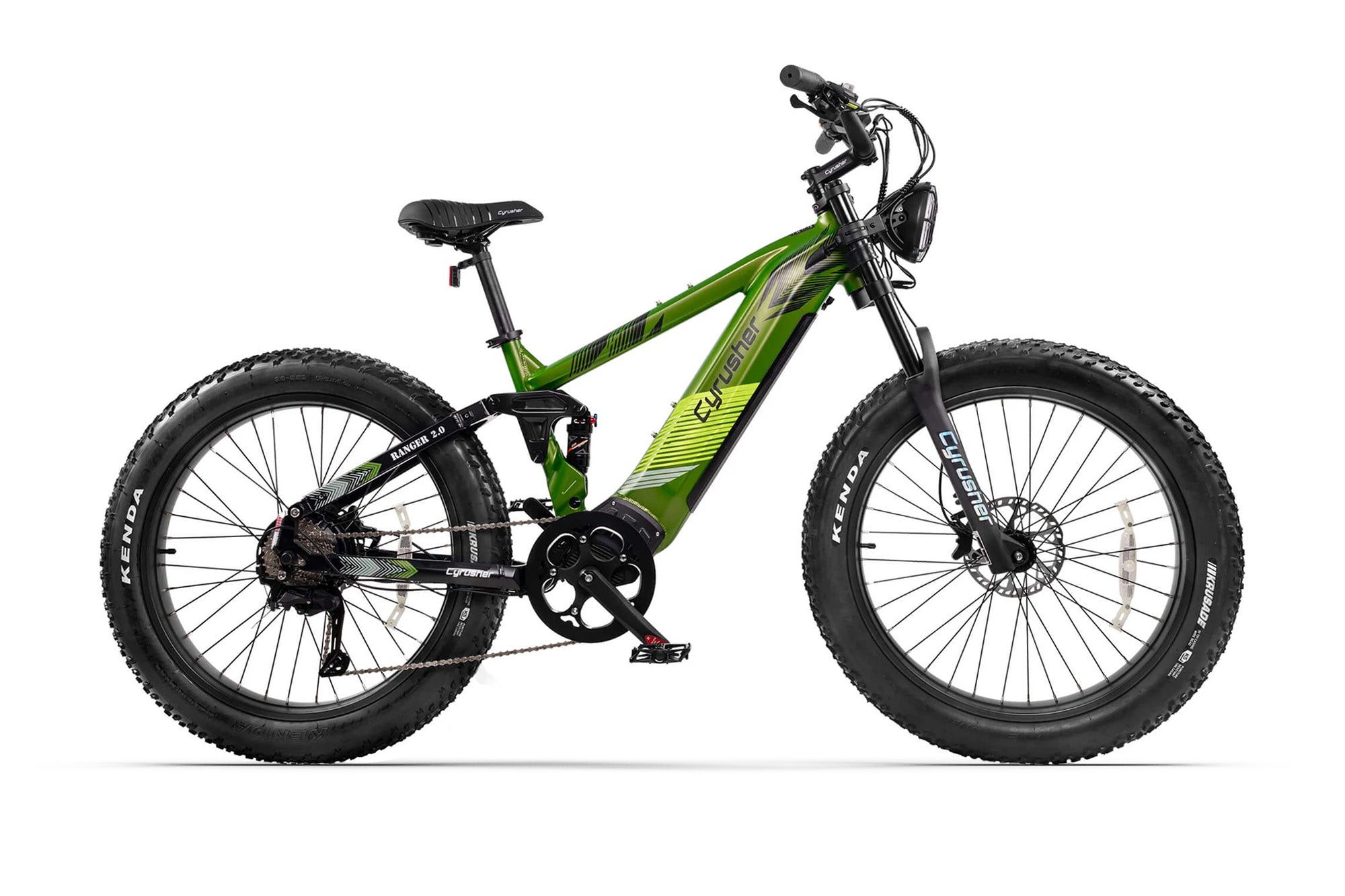

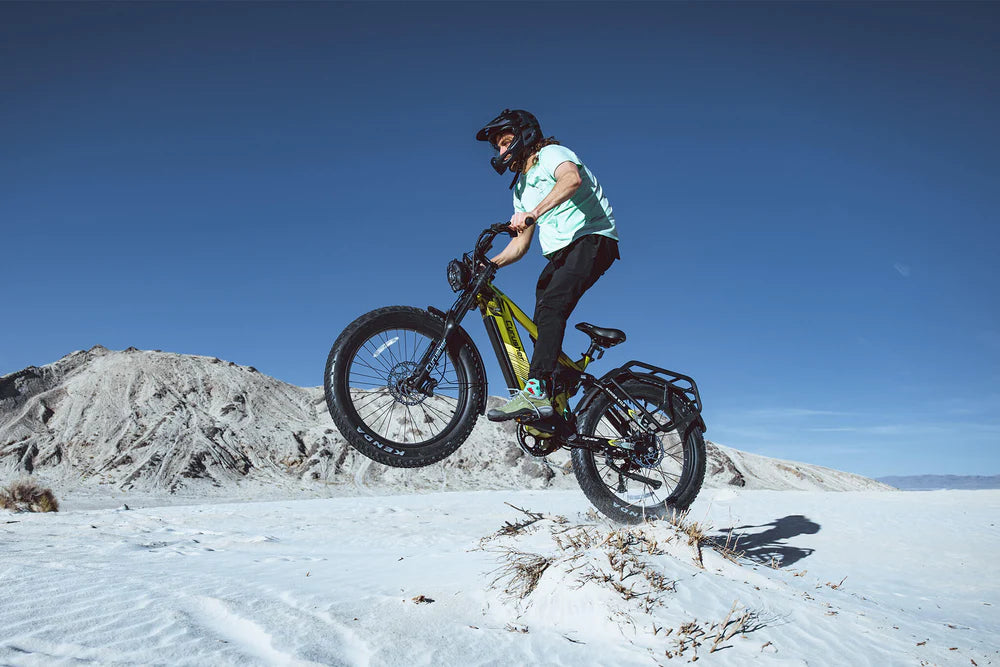
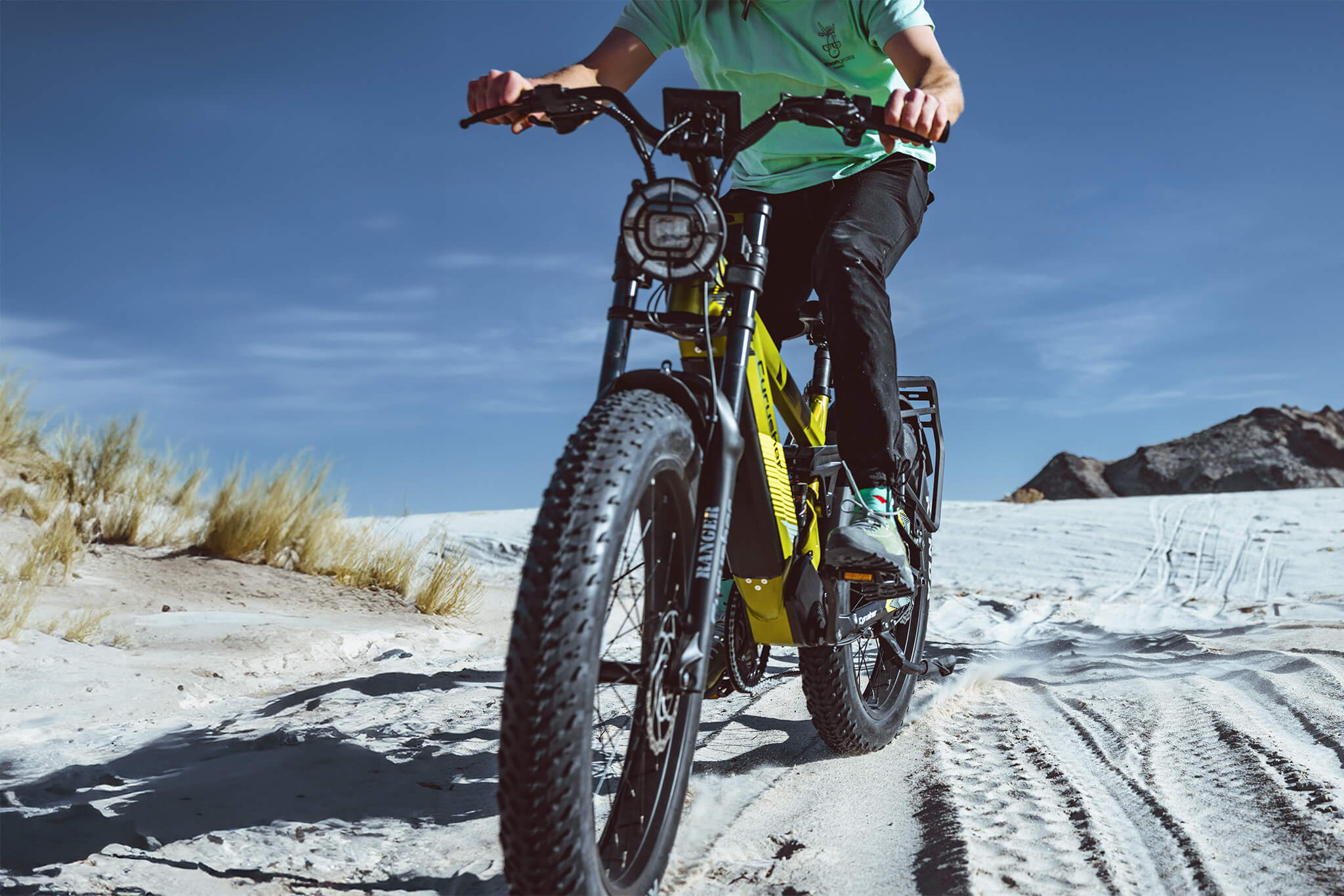

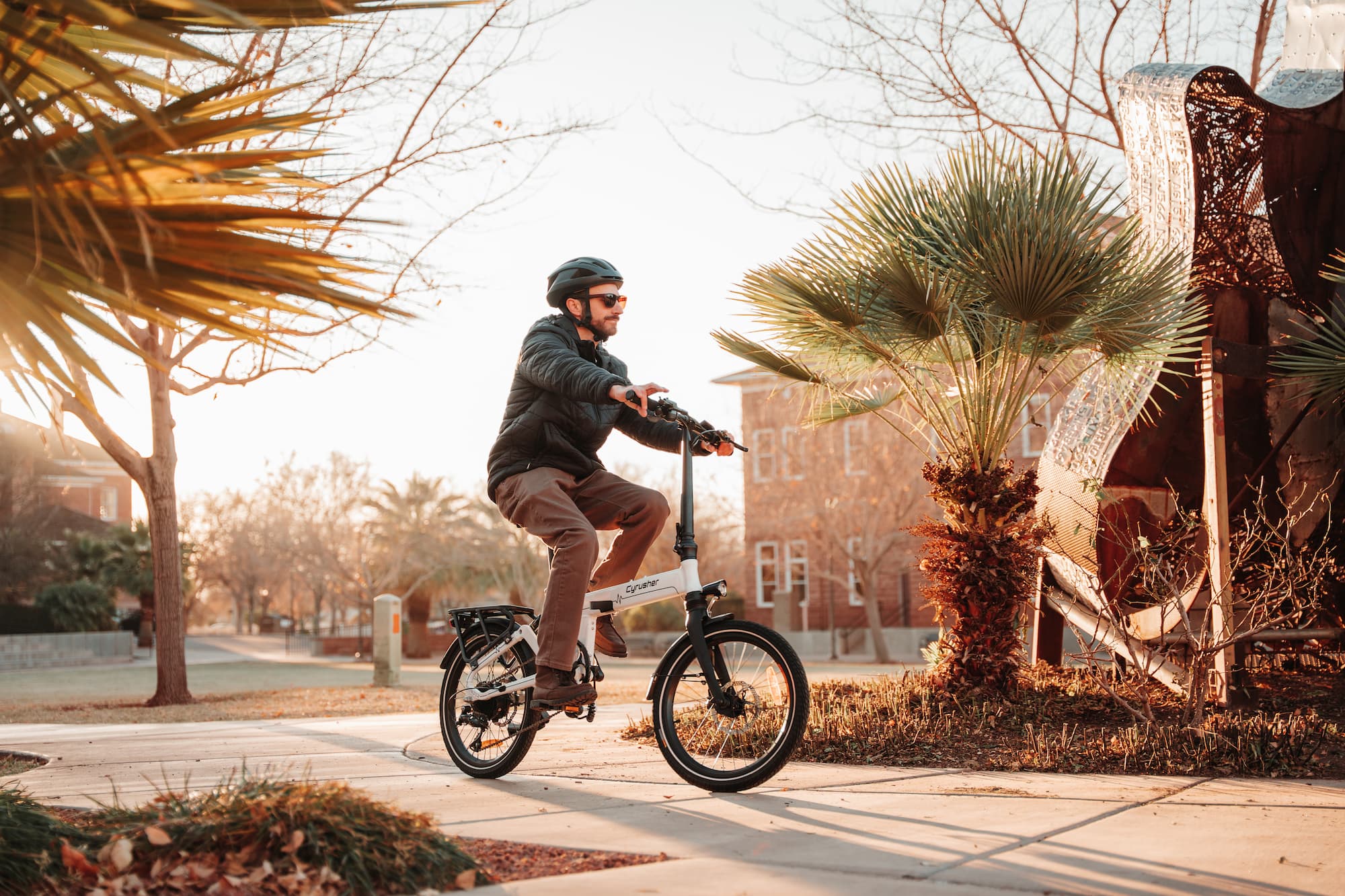


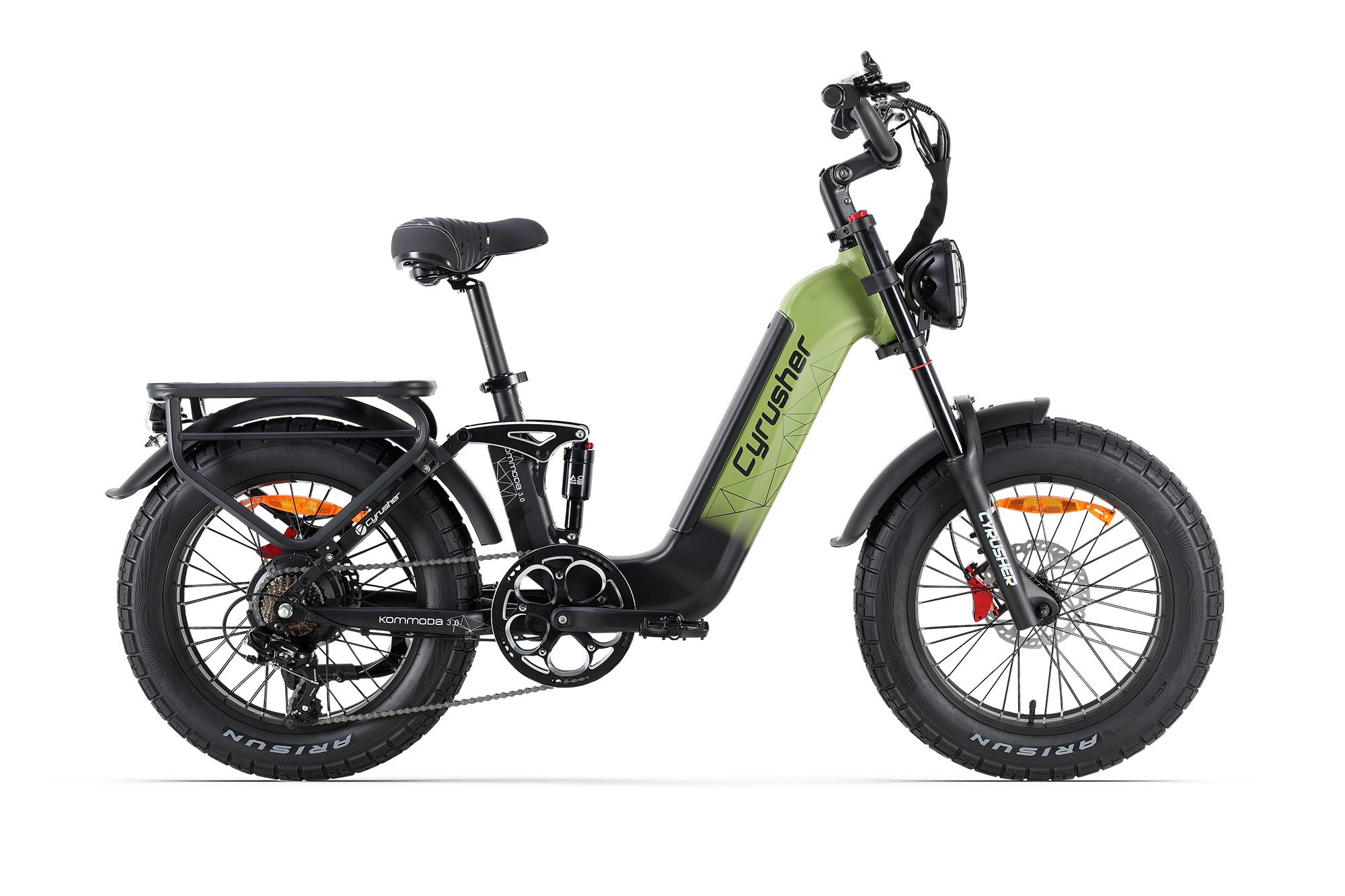
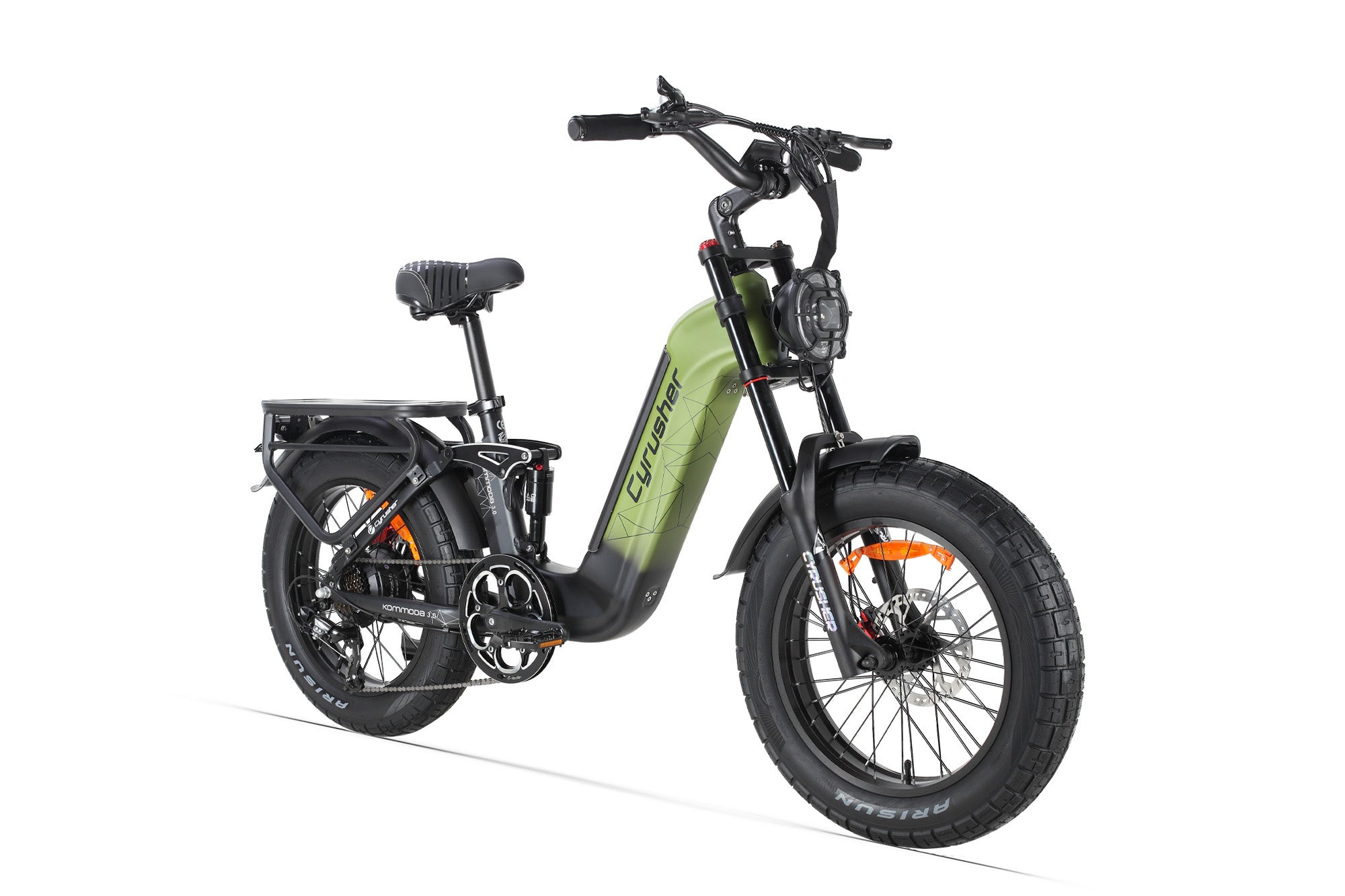





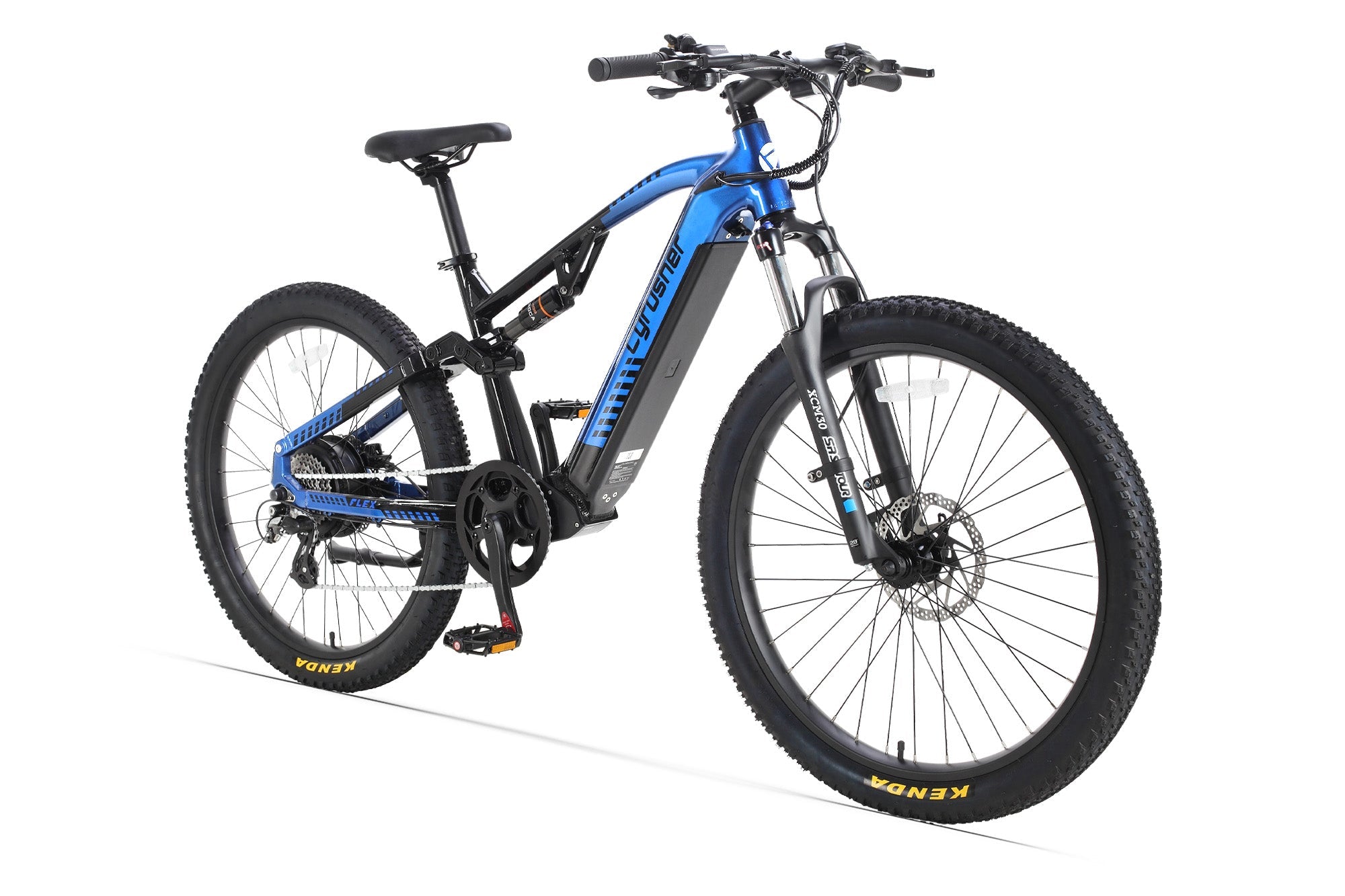
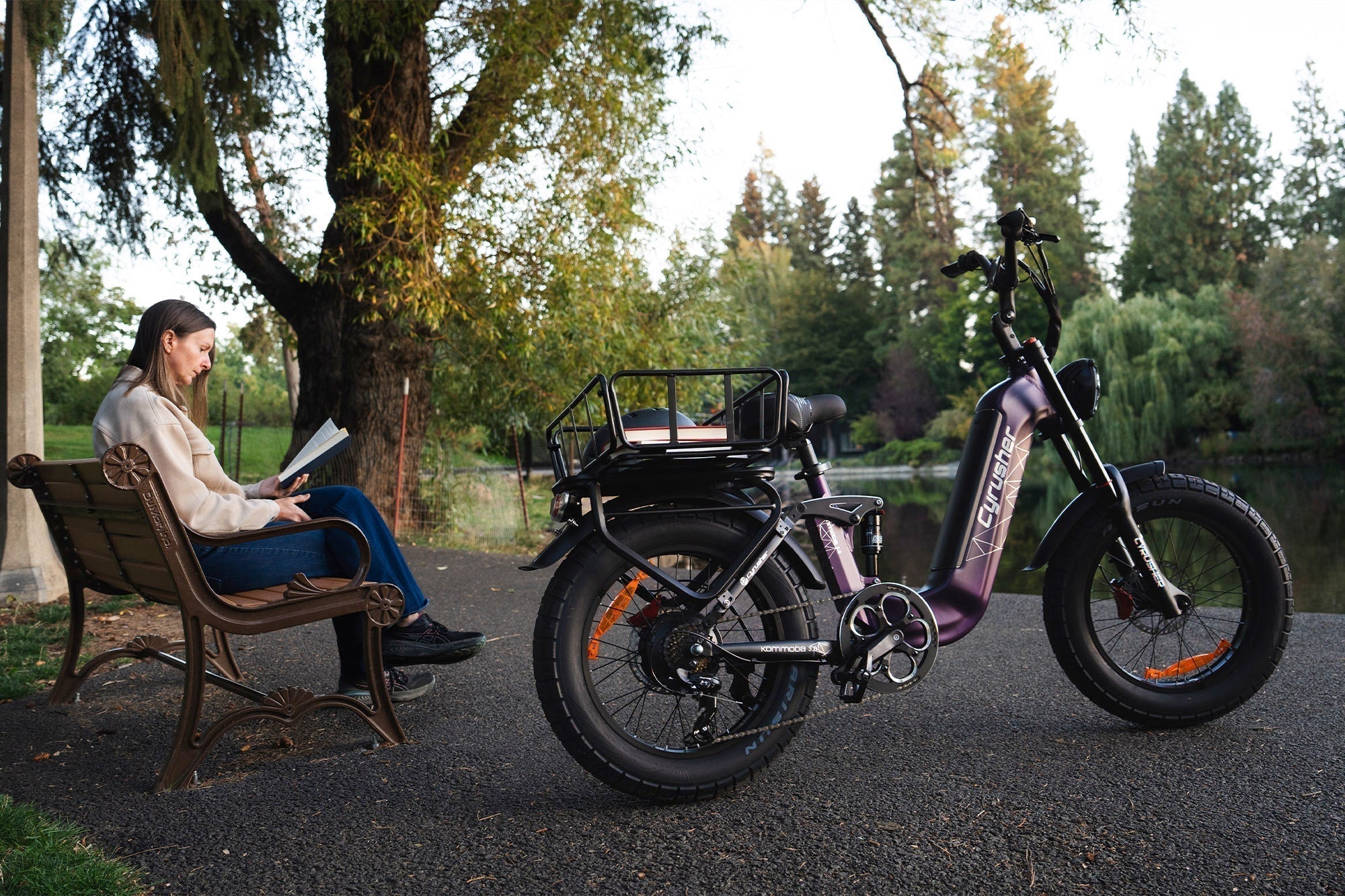
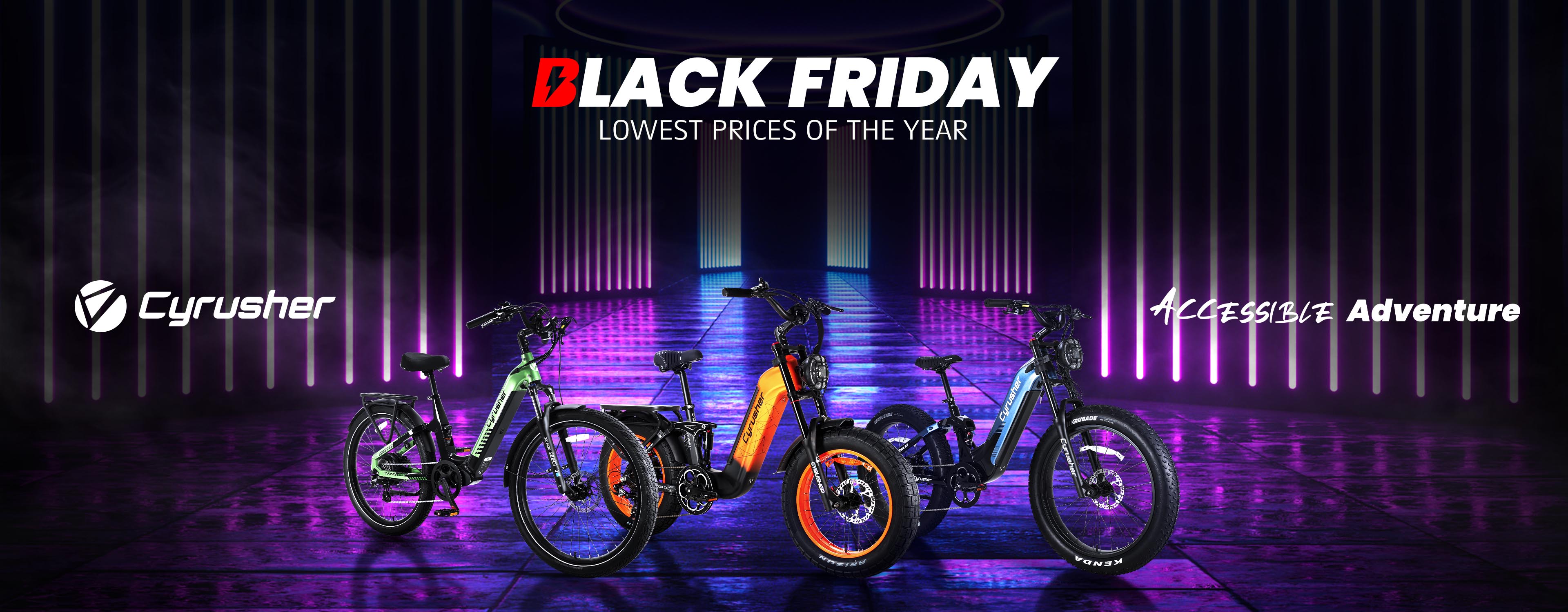

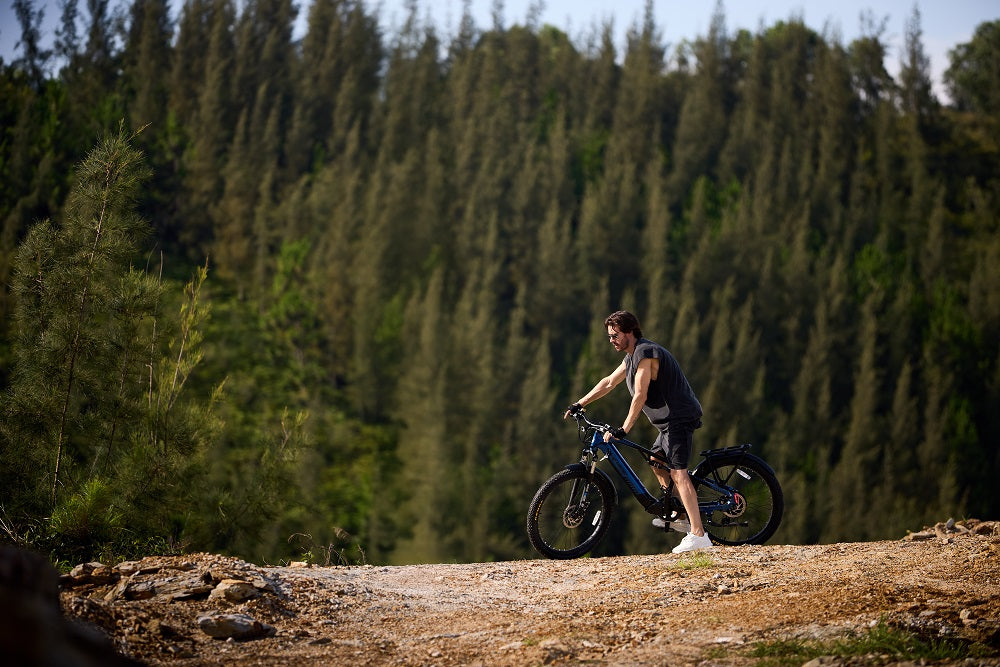

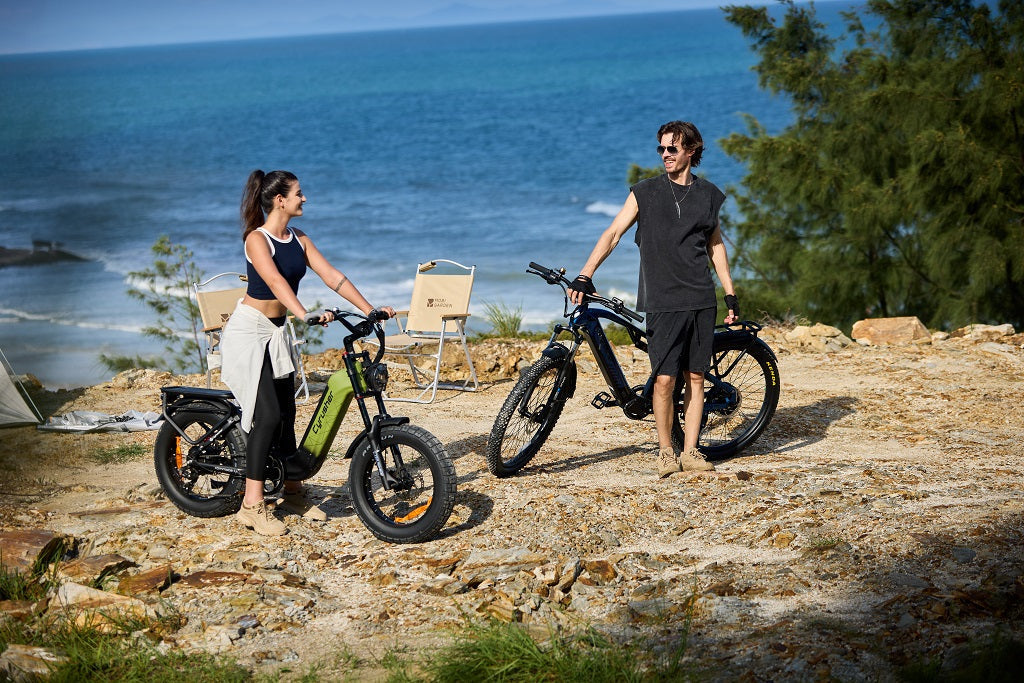
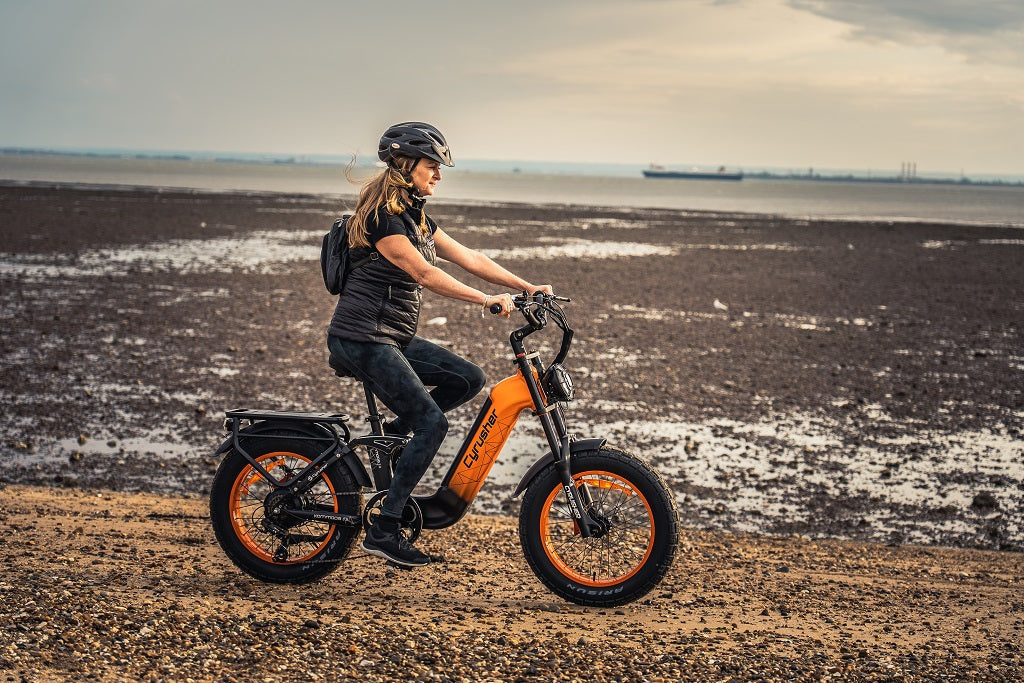
Share:
The Ultimate Electric Bike Buying Guide 2025